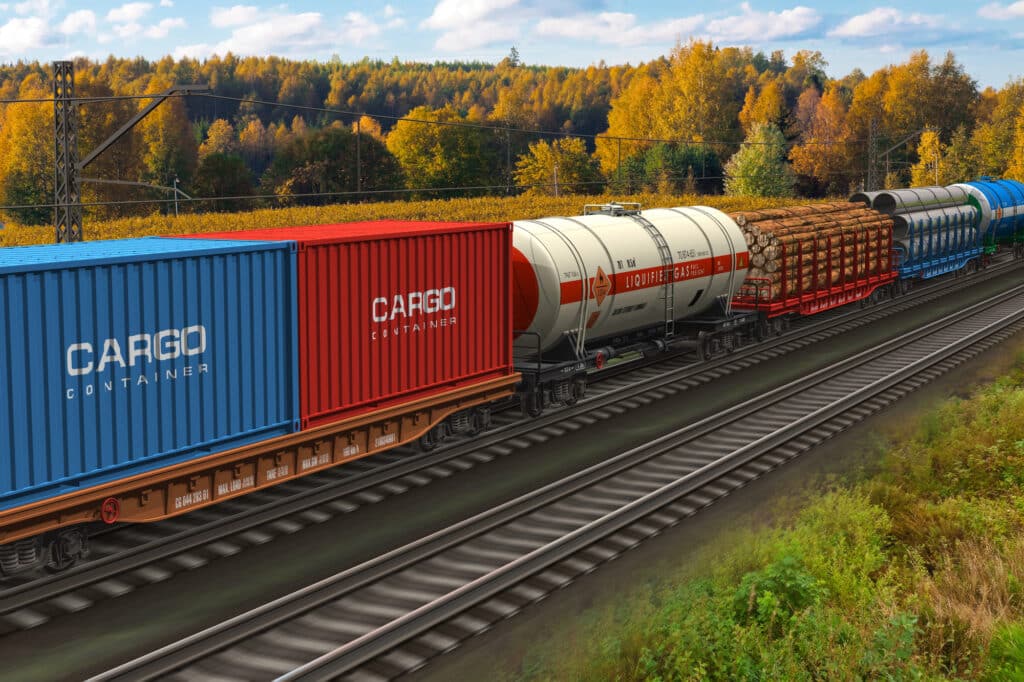Uzbekistan’s Logistics Ambitions: Integrating into Trans-Eurasian Corridors

Uzbekistan is expanding its presence in Eurasian logistics, seeking to evolve from a simple transit territory into a key player in international transport. At the heart of this strategy lies the development of the Middle Corridor — an alternative route between China and Europe that bypasses Russia.
These insights are drawn from the report «Prospects of the Middle Corridor: A Central Asian and Azerbaijani Perspective» (in possession of Kursiv Uzbekistan), produced by experts from five countries as part of a project initiated by Uzbekistan’s Ministry of Transport with support from the PeaceNexus Foundation.
Uzbekistan’s Rise as a Regional Transport Node
The report identifies Uzbekistan as a leading exporter of transport services in Central Asia. In 2022, transport accounted for 44% of all service exports. This signalls substantial transit potential, especially in the railway sector.
Uzbekistan has also established itself as a prominent player in southern trade routes. In 2023, it handled 64% of all cargo traffic between Central Asia and Pakistan. The country also ranked among the top three countries for freight flows with India and Iran. This reinforces its growing relevance in South Asia’s logistics landscape.
Which Route Will Tashkent Choose?
The study highlights three key corridors through which Uzbekistan is developing its external logistics strategy:
- Northern Corridor (via Kazakhstan, Russia and Belarus). Still the primary route for trade with the EU. This channel handled around one mln tonnes in 2023, with a theoretical capacity of 16 mln tonnes.
- Southern Corridor (via Turkmenistan, Iran and Turkey). Mainly used for road freight, this corridor faces limitations in railway infrastructure. Potential capacity is estimated at 10 mln tonnes.
- Middle Corridor (via the Caspian Sea, Azerbaijan and Georgia). Uzbekistan utilises two routes:
- Via Kazakhstan: In 2023, 20 mln tonnes of cargo were transported along the route «Uzbekistan – Kazakhstan – Caspian Sea ports – Azerbaijan – Georgia – Black Sea – EU,» exceeding its annual capacity of 12 mln tonnes.
- Via Turkmenistan: In 2024, 0.5 mln tonnes of cargo were transported along the route «Uzbekistan – Turkmenistan – Caspian Sea ports – Azerbaijan – Georgia – Black Sea – EU,» with an annual capacity of 12 mln tonnes.
Uzbekistani businesses are also investing in port infrastructure abroad, including a 28.8-hectare site in the Poti Industrial Zone (Georgia), to enhance trade access with Europe and North America.
Why the Middle Corridor Matters
The Middle Corridor remains less developed than the Northern route in terms of speed and infrastructure. But its strategic value is rising amid geopolitical constraints affecting transit through Russia.
For Uzbekistan, this route offers:
- Direct access to EU and Turkish markets.
- Diversification of transport routes in a volatile global landscape.
- Growth in logistics and transport service exports.
Nevertheless, the corridor presents challenges, such as the need to cross two seas (Caspian and Black), infrastructure inconsistencies, and falling water levels in the Caspian, which may affect port operations.
Still Not a Logistics Hub — Yet
As the authors of the report note, no direct transcontinental routes linking the major markets of Eurasia currently pass through Uzbekistan. This positions the country more as a supporting link in the supply chain rather than a fully-fledged logistics hub.
However, two major rail projects may soon change that:
- The long-awaited China–Kyrgyzstan–Uzbekistan railway, which would connect Uzbekistan directly to China’s logistics network.
- The Uzbekistan–Afghanistan–Pakistan railway, offering access to Indian Ocean ports.
Conclusions
Uzbekistan currently plays an active but secondary role in the logistics landscape of Eurasia. The country is working to diversify its trade routes, reduce dependency on the Northern Corridor, and align itself with the growing global demand for resilient and adaptable supply chains.
The Middle Corridor is not yet a full alternative, but it is a strategic option. With ongoing investments and infrastructure projects, Uzbekistan is positioning itself to become a regional logistics hub in a shifting global economy.

